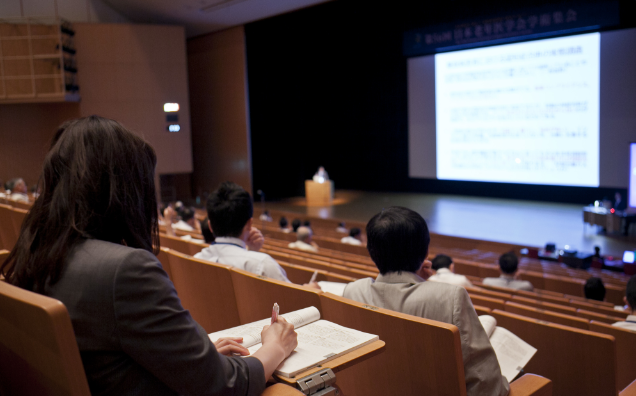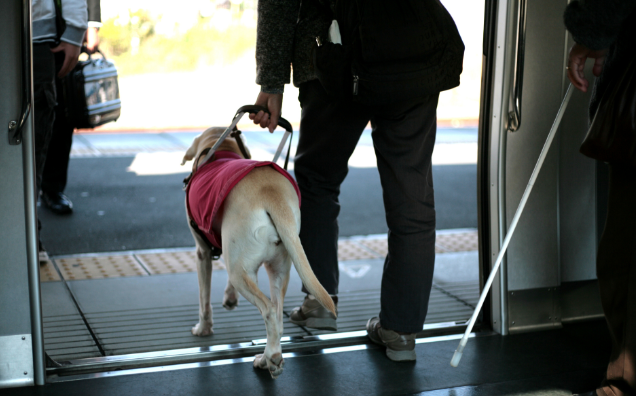- TOP >
- Efforts of Hachijo View Hotel
Efforts of Hachijo View Hotel 4422-1 Okago, Hachijo-machi, Hachijojima, Tokyo
 Mt. Hachijo-Fuji greets visitors approx. 1 hr. from Haneda by air
Mt. Hachijo-Fuji greets visitors approx. 1 hr. from Haneda by air
 The lobby brimming with a resort-like atmosphere
The lobby brimming with a resort-like atmosphere
 Director & General Manager Masahide Miyashiro
Director & General Manager Masahide Miyashiro
Renovating 20 guest rooms into accessible rooms
Hachijo View Hotel, located in the subtropical area of Tokyo, sits atop a hill on Hachijojima (Hachijo Island). True to its name, the hotel offers a spectacular view from the lobby and guest rooms in the Tokoharu Wing and is brimming with a resort-like atmosphere. Hachijojima can be reached in about an hour from Haneda Airport, and the hotel is 5 minutes by car from Hachijojima Airport and is conveniently accessed not only for sightseeing, but also for fishing, diving, and business. The hotel stands against the backdrop of Mt. Hachijo-Fuji, the highest peak on the Izu Islands, and looks down on the endless, expansive sea of clear “Hachijo blue.” Visitors are soothed by the view of the Pacific Ocean and the star‐studded sky from the lobby. Utilizing the Tokyo Subsidy to Support Barrier-free Accommodations, a total of 20 guest rooms on the 2nd and 3rd floors of the main building have been renovated into accessible rooms so that persons such as wheelchair users and the elderly can feel at ease staying in rooms free of steps. We talked to Director & General Manager Masahide Miyashiro about the hotel’s renovations.
 Mt. Hachijo-Fuji greets visitors approx. 1 hr. from Haneda by air
Mt. Hachijo-Fuji greets visitors approx. 1 hr. from Haneda by air
 The lobby brimming with a resort-like atmosphere
The lobby brimming with a resort-like atmosphere
 Director & General Manager Masahide Miyashiro
Director & General Manager Masahide Miyashiro
 The toilet and bath to the left and right of the entrance
The toilet and bath to the left and right of the entrance
 The roll-in shower in the bath
The roll-in shower in the bath
What prompted the renovations
On Hachijojima, the Hachijojima Yume-den Walking Marathon is held centering on persons with disabilities with the aim of communicating (“den”) the dream (“yume”) of “wanting to live an even better life.” Since the beginning, people not only from the island, but also from welfare facilities outside the island have participated, and once about 20 persons in wheelchairs came to the island. As a Japanese-style hotel at the time, we felt the difficulty of providing accommodations, and in 2004 we created one barrier-free guest room and reservable private bath. That set in motion our endeavors toward barrier-free accommodations.
As the Yume-den Walking Marathon participants become older, staying in the kind of Japanese-style guest rooms we offered before becomes inconvenient. The participants as well as tourists are often older individuals, so we took the plunge and drew up plans to turn the Japanese-style guest rooms on the 2nd and 3rd floors of the main building into Western-style guest rooms. In summer, there are many young visitors to the island. We wanted to build accessible rooms that would please our young guests and ensure persons with disabilities and the elderly could feel at ease staying in rooms free of steps. Our desire is to provide guest rooms that are easy for everyone to use all year long. In the past, the 2nd-and-3rd-floor guest rooms were only accessible by stairs, so at the same time we made plans to install an elevator.
However, there was a major problem. Installing bathtubs in each of the 20 guest rooms presented serious renovation challenges since the building is old. Therefore, there are no bathtubs, but we have installed stylish roll-in showers that are easy for persons in wheelchairs to use and popular with the younger generation. The shower has a sliding door and is level, making it easy to enter even in a wheelchair, and there is a bench seat in the shower. When it came to putting in an elevator, securing an auxiliary power supply was an issue since the endeavor involved large-scale construction, given that it had to be installed in an existing building. Hachijojima is an area that has a lot of lightning strikes, which means a power supply must be secured in case of a power outage. From consideration to completion, installing the elevator took 7 years.
 The toilet and bath to the left and right of the entrance
The toilet and bath to the left and right of the entrance
 The roll-in shower in the bath
The roll-in shower in the bath
 Keypad door lock
Keypad door lock
 A closet easy for persons in wheelchairs to use
A closet easy for persons in wheelchairs to use
Creative details for ensuring everyone can enjoy a comfortable stay
It has been 4 years since the renovations and many guests have comfortably stayed in the accessible rooms. The numbers on the guest room doors are raised so that persons with visual impairment can touch them to readily confirm the guest room number. The door locks use a keypad so there is no need to search for and take out a key. In addition, we can also separately provide a contactless key that opens the door when waved over the lock.
There is a slope just inside the room, but handrails installed on both sides enable persons in wheelchairs to effortlessly enter. The closet rod for hangers is also set at a height that is easy for wheelchair users to reach. The bath and toilet are separate and placed on either side of the room entrance, which ensures one another’s privacy when staying with someone. The handrail in the toilet is installed either on the left or right, depending on the guest room. Some persons can only use one hand due to conditions such as hemiplegia, so if we are made aware of this early on, we can select a guest room based on whether a left-side or right-side handrail is best. Moreover, to the extent possible we will provide airport pick up and inquire as to what guests utilizing an accessible room need assistance with to confirm the scope of the help we can give. The entrance to the breakfast dining area has a step, but it is mitigated with a simple slope. The only access inside the hotel to the large communal bath in the basement are stairs, but the basement floor with the large communal bath can be reached by briefly going outside the building and using the sloped passage.
 Keypad door lock
Keypad door lock
 A closet easy for persons in wheelchairs to use
A closet easy for persons in wheelchairs to use
The desire to make improvements throughout the Izu Islands
Previously, 2 meals were offered for a one-night stay, but that has changed to breakfast only. This is because, rather than have island visitors cocooned in the hotel, we want to restore vitality to the island together with local restaurants. We have heard from several restaurant owners on the island that they want to close due to the impact of the COVID pandemic and getting older. One of the virtues of this island is that even when the island residents encounter hardships, we work jointly to overcome them together. Perhaps that island tradition nudged us toward making renovations for accessible rooms where everyone can enjoy a comfortable stay, regardless of whether a guest has a disability.
Going forward, our goal is to turn the 25 guest rooms that have yet to be renovated into barrier-free rooms. We intend to apply what we have learned thus far from accessible room renovations to take up the next challenge of creating barrier-free Japanese-style rooms, instead of Western-style rooms. Various issues such as the issue of succession still exist on the Izu Islands as well as Hachijojima, but we hope to make improvements throughout the islands to ensure everyone can enjoy their visit.
 social media accounts
social media accounts
Tokyo, a city that is accessible everywhere to anyone.
Sightseeing where you wish, as you wish.
This ability to travel anywhere you please makes life that much richer.
Tokyo welcomes your visit.
Here you can encounter tradition,
history, culture, nature, technology,
and, best of all, smiling faces.
Making tourism closer and more
enjoyable through accessible tourism.




